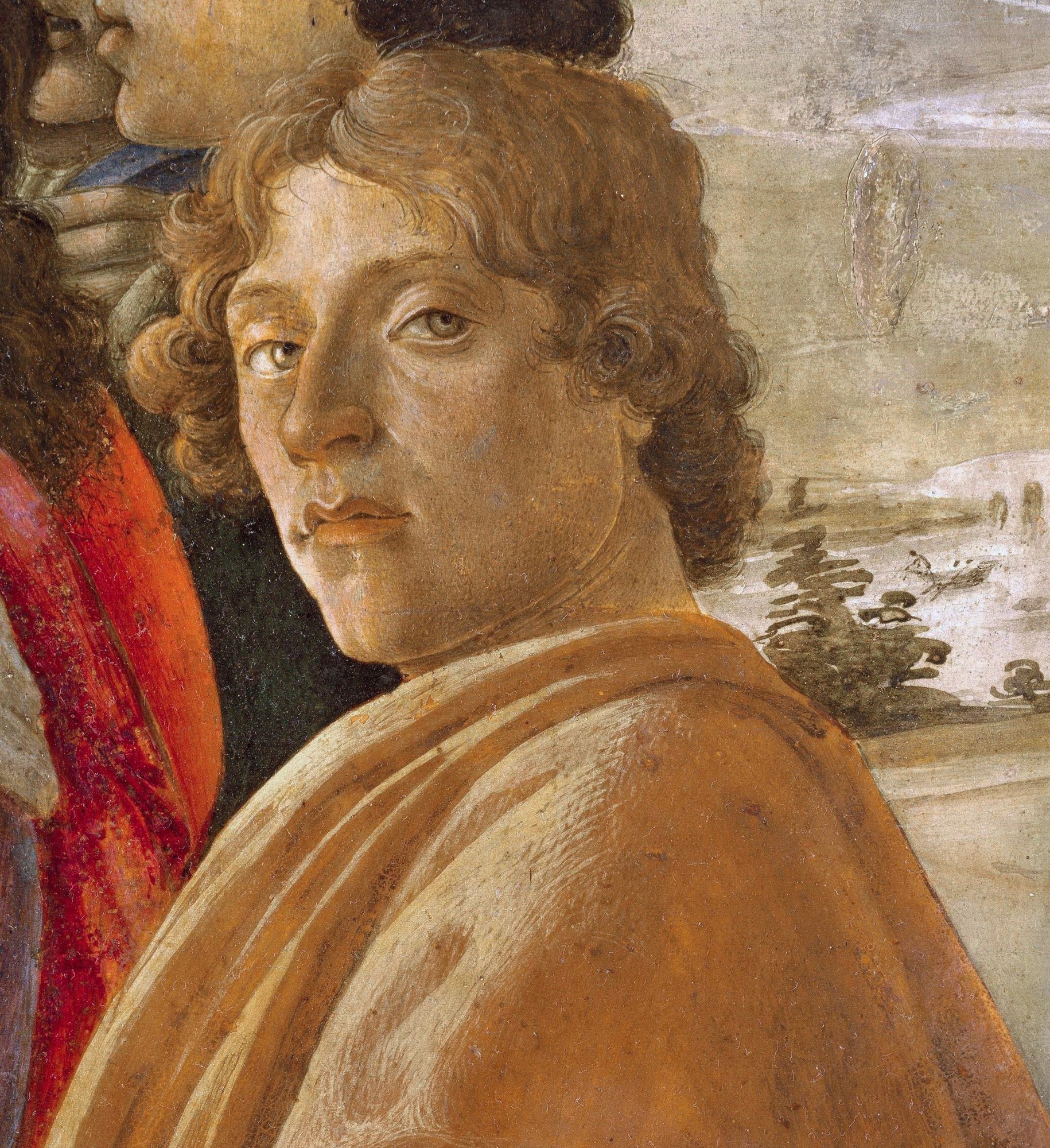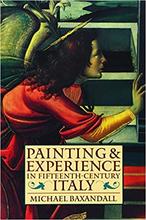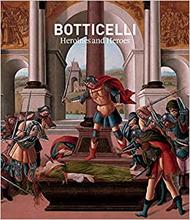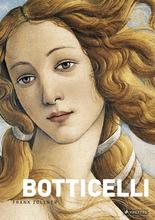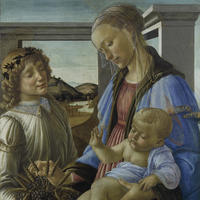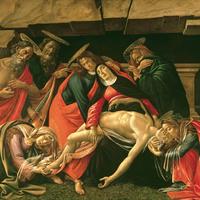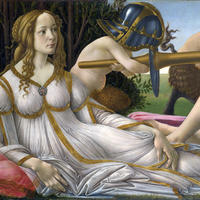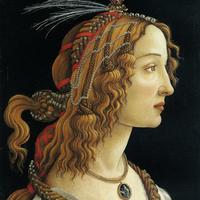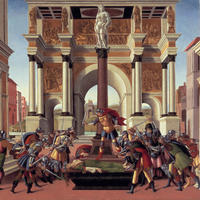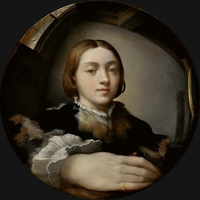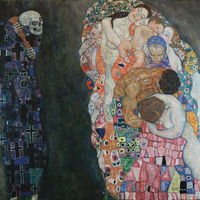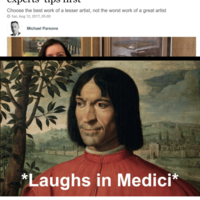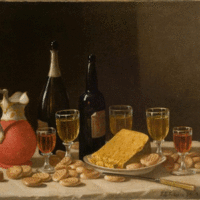More about Sandro Botticelli
- All
- Info
- Shop

Sr. Contributor
Sandro Botticelli's love life could make a terrible Lifetime movie (that I'd still watch).
He never married. Which didn't garner any sideways glances since 12% of the Florentine marriage-age population stayed single. But he was accused of "keeping a boy," an allegation of sodomy.
Rectal hobgoblin' was a common accusation to lob at your enemies in Renaissance Florence. Nearly 17,000 of Florence's 40,000 citizens were accused of butt play in the Quattrocento alone. The reason is, and this was true for the sodomy laws in 14 US states until a Supreme Court decision in 2003, it was a coded charge for being gay. Florence had a public institution devoted to prosecuting sodomy: The Office of the Night. Which, you know, is a pretty cool name if you ignore the heinous bigotry and all the lives they tried to destroy.
With that accusation in mind, Sandro was probably in love with a married woman. Her name was Simonetta Vespucci. Married to Marco Vespucci, map-maker Amerigo Vespucci's cousin. Her face may have inspired the strawberry blondes that permeate Botticelli's oeuvre. Think nude lady riding a clam on a windswept seascape. If he had a young woman's face to paint, it was probably hers that he was painting. If he weren't in love with Simonetta, then he certainly wanted to Buffalo Bill her or something.
If the paintings weren't enough to prove his infatuation, then keep in mind that he was buried at Simonetta's feet. As requested on his deathbed. Simonetta died of tuberculosis at the age of 23. Many of Botticelli's most famous works that bear her likeness would have been painted years, sometimes decades after her death. That's devotion, y'all. Devotion enough to have love conquer the boundaries of societal taboos-- even death. Or, devotion enough to wear someone's face on your face.
Sandro's birth name is Filipepi. Botticelli is a name given by his older brother Giovanni, who was a pawn broker. The name means either 'Little Barrel' or 'Little Wine Cask.' His first career was as a goldsmith. His father saw a budding talent for painting, so he got him the tutelage of Filippo Lippi. Which is kind of like if you were learning plumbing but your Dad brought you to rapping school with Kanye one afternoon and said, "This is your beautiful dark twisted life now."
Sandro's Dad was obviously right, as his son was a master painter by 25. He became the de facto painter for the Medici family, which led him to become the earliest European artist to paint high-quality pagan stuff. The Medicis talked a lot of mythological bull about their family's greatness, and Botticelli translated that into paintings of Roman gods and goddesses and whatnot. But, after he got swept up in Savonarola's religious fanaticism, he threw some of his own paintings into the Bonfire of the Vanities. No one knows which he burned, though. We'll just pretend they were rough drafts instead of masterpieces.
Featured Content
Here is what Wikipedia says about Sandro Botticelli

Alessandro di Mariano di Vanni Filipepi (c. 1445 – May 17, 1510), better known as Sandro Botticelli (/ˌbɒtɪˈtʃɛli/ BOT-ih-CHEL-ee;
Italian: [ˈsandro bottiˈtʃɛlli]) or simply Botticelli, was an Italian painter of the Early Renaissance. Botticelli's posthumous reputation suffered until the late 19th century, when he was rediscovered by the Pre-Raphaelites who stimulated a reappraisal of his work. Since then, his paintings have been seen to represent the linear grace of late Italian Gothic and some Early Renaissance painting, even though they date from the latter half of the Italian Renaissance period.
In addition to the mythological subjects for which he is best known today, Botticelli painted a wide range of religious subjects (including dozens of renditions of the Madonna and Child, many in the round tondo shape) and also some portraits. His best-known works are The Birth of Venus and Primavera, both in the Uffizi in Florence, which holds many of Botticelli's works. Botticelli lived all his life in the same neighbourhood of Florence; his only significant times elsewhere were the months he spent painting in Pisa in 1474 and the Sistine Chapel in Rome in 1481–82.
Only one of Botticelli's paintings, the Mystic Nativity (National Gallery, London) is inscribed with a date (1501), but others can be dated with varying degrees of certainty on the basis of archival records, so the development of his style can be traced with some confidence. He was an independent master for all the 1470s, which saw his reputation soar. The 1480s were his most successful decade, the one in which his large mythological paintings were completed along with many of his most famous Madonnas. By the 1490s, his style became more personal and to some extent mannered. His last works show him moving in a direction opposite to that of Leonardo da Vinci (seven years his junior) and the new generation of painters creating the High Renaissance style, and instead returning to a style that many have described as more Gothic or "archaic".
Check out the full Wikipedia article about Sandro Botticelli

